ChatGPT:
🦋 The Painted Lady Butterfly: An Extraordinary Migration 🦋
The painted lady butterfly, Vanessa cardui, is renowned for its migratory endurance, typically completing a 15,000-kilometer journey from Europe to Africa and back over several generations. However, new research has uncovered an even more astonishing feat: the ability of these butterflies to cross the Atlantic Ocean from east to west. This extended summary delves into the discovery, methodology, and implications of this remarkable migratory event.
🌍 Discovery and Initial Findings
In October 2013, Spanish entomologist Gerard Talavera discovered several dying painted lady butterflies on a beach in French Guiana, located on the northeastern coast of South America. This unexpected finding sparked a comprehensive investigation to determine the origins of these butterflies and understand how they ended up so far from their usual migratory routes.
📅 Context of the Discovery
- Date and Location: The butterflies were found at 6 am on October 28, 2013, in French Guiana.
- Initial Hypothesis: Talavera and his colleagues hypothesized that these butterflies might have been blown off course during their typical southward migration from Europe to Africa.
🔬 Methodological Approach
The investigation employed a multidisciplinary approach, incorporating meteorology, genetics, botany, and isotope geochemistry to trace the butterflies’ journey.
🌬️ Meteorological Analysis
Researchers reviewed meteorological data and identified that steady easterly winds from the west coast of Africa had been blowing toward French Guiana in the week preceding the discovery. These winds, averaging 27 kilometers per hour, are the same currents that transport Saharan dust to the Caribbean and the American continent.
🧬 Genetic Analysis
The team compared the DNA of the Guyanese painted ladies with that of 126 individuals from North America, Europe, and Africa. The genetic analysis revealed that the genomes of the Guyanese butterflies matched those of populations migrating between Europe and Africa, suggesting a European origin.
🌱 Pollen Examination
Pollen grains found on the butterflies’ bodies provided additional clues. These grains belonged to plant species endemic to the Sahel region and sub-Saharan zones in Africa, which flower between August and November. This timing corresponds with the end of the rainy season in West Africa, supporting the hypothesis that the butterflies originated from this region.
🌐 Isotope Analysis
Isotope analysis further pinpointed the ecological and geological substrate on which the butterflies had grown. By examining isotopic maps, researchers determined that the butterflies likely originated from southwest France.
🦋 Understanding the Migration
The painted lady butterflies’ transatlantic journey was a complex event influenced by multiple factors.
🛤️ The Role of Air Currents
Without the assistance of air currents, the butterflies could only have flown a maximum of 780 kilometers. However, with the help of steady easterly winds, they managed to cover 4,200 kilometers. The butterflies likely employed a strategy of staying aloft and hovering, flapping their wings only to maintain altitude for 85% of the journey. This method, combined with favorable wind conditions, allowed them to sustain their energy reserves and complete the transatlantic crossing in five to eight days.
⚡ Energy Calculations
Researchers calculated that the butterflies’ energy reserves needed to be at least 14% of their total mass at the start of the journey. This energy conservation was crucial for their survival over the long-distance flight.
🏞️ Broader Implications
The discovery of painted lady butterflies in French Guiana highlights the complexity and variability of insect migration patterns. It also raises important questions about the impact of climate change on these patterns.
🌡️ Climate Change and Migration
Changes in atmospheric circulation due to global warming could alter migratory routes, potentially affecting agriculture, veterinary, and human health. The Migrating Insect Network project aims to increase observations of insect migrations to better understand these dynamics.
🐛 Future of Painted Ladies in South America
While the butterflies found in French Guiana were too exhausted to reproduce, researchers are curious about whether local conditions would support their survival and establishment in South America. Factors such as available plant species and predator populations will play a critical role.
🌐 The Migrating Insect Network Project
The Migrating Insect Network project seeks to expand knowledge on insect migrations, which remain largely underappreciated in terms of their ecological importance. A study published in Proceedings of the Royal Society B highlighted the passage of millions of migratory insects over the Pyrenees, emphasizing the scale and significance of these movements.
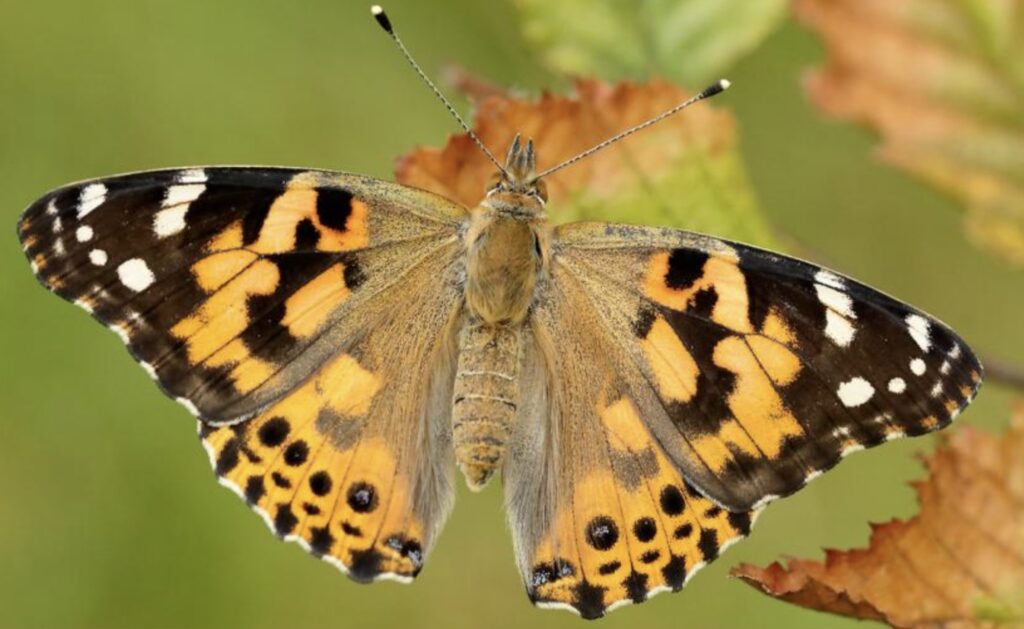
📝 Key Takeaways
- Discovery Context: Painted lady butterflies were found in French Guiana in 2013, sparking an investigation into their origins.
- Easterly Winds: Steady winds from Africa played a crucial role in the butterflies’ transatlantic journey.
- Genetic Match: DNA analysis linked the Guyanese butterflies to populations migrating between Europe and Africa.
- Pollen Evidence: Pollen grains on the butterflies’ bodies indicated their origin in West Africa.
- Isotope Analysis: Isotope maps confirmed the butterflies’ growth environment in southwest France.
- Energy Needs: Calculations showed that butterflies required significant energy reserves for the transatlantic crossing.
- Meteorological Data: Meteorological conditions were essential for the butterflies’ successful migration.
- Climate Change Impact: Global warming may alter insect migration routes, with potential ecological consequences.
- Migrating Insect Network: This project aims to enhance understanding of insect migrations and their ecological roles.
- Future Research: Ongoing studies will continue to explore the complexities of insect migration and its environmental impacts.
🌟 In-Depth Insights
1. Discovery Context
The discovery of dying painted lady butterflies on a beach in French Guiana by Gerard Talavera in 2013 led to a thorough investigation. The initial hypothesis suggested that the butterflies might have been blown off course during their migration from Europe to Africa.
2. Easterly Winds
Meteorological data revealed that steady easterly winds from Africa had been blowing towards French Guiana in the week prior to the discovery. These winds, averaging 27 kilometers per hour, facilitated the butterflies’ transatlantic crossing, similar to how Saharan dust is transported to the Caribbean.
3. Genetic Match
DNA analysis showed that the genetic material of the Guyanese painted ladies matched that of butterflies migrating between Europe and Africa. This finding confirmed their European origin and connection to the known migratory route between these continents.
4. Pollen Evidence
Pollen grains found on the butterflies provided crucial evidence of their origin. The pollen belonged to plant species endemic to the Sahel region and sub-Saharan zones in Africa, which bloom from August to November. This timing aligned with the butterflies’ migration period.
5. Isotope Analysis
Isotope analysis indicated that the butterflies had grown in ecological conditions consistent with southwest France. This method helped trace their migratory path and confirmed their European origin.
6. Energy Needs
Researchers calculated that the butterflies needed to conserve significant energy reserves to complete the transatlantic journey. With favorable wind conditions, they could sustain their flight by flapping their wings only to maintain altitude, conserving energy over the long distance.
7. Meteorological Data
The steady easterly winds from Africa were essential for the butterflies’ migration. Without these winds, the butterflies could only have flown a maximum of 780 kilometers, making the transatlantic journey impossible.
8. Climate Change Impact
Changes in atmospheric circulation due to climate change could alter migratory routes, potentially affecting ecosystems and agriculture. The impact of global warming on insect migration patterns remains a critical area of research.
9. Migrating Insect Network
The Migrating Insect Network project aims to increase observations and understanding of insect migrations. A study in Proceedings of the Royal Society B highlighted the migration of millions of insects over the Pyrenees, emphasizing the scale of these movements.
10. Future Research
Ongoing studies will continue to explore the complexities of insect migration, focusing on the ecological impacts and potential changes due to climate change. Researchers aim to better understand the importance of these migrations and their effects on global ecosystems.
Q&A
What is the painted lady butterfly known for?
The painted lady butterfly is known for its extensive migratory journey, typically covering 15,000 kilometers from Europe to Africa and back over several generations.
What new discovery was made about the painted lady butterfly?
Researchers discovered that the painted lady butterfly is also capable of crossing the Atlantic Ocean from east to west, a previously unknown feat for this species.
Who discovered the painted lady butterflies in French Guiana?
Spanish entomologist Gerard Talavera discovered the dying painted lady butterflies on a beach in French Guiana in October 2013.
What role did easterly winds play in the butterflies’ journey?
Easterly winds from Africa, blowing steadily at 27 kilometers per hour, facilitated the butterflies’ transatlantic journey by providing crucial assistance in covering the distance.
How did researchers confirm the origin of the butterflies found in French Guiana?
Researchers used a combination of meteorological data, DNA analysis, pollen examination, and isotope analysis to trace the butterflies’ origin to southwest France.
What did DNA analysis reveal about the butterflies’ origin?
DNA analysis showed that the Guyanese painted ladies’ genomes matched those of butterflies migrating between Europe and Africa, confirming their European origin.
What evidence did pollen grains provide?
Pollen grains on the butterflies’ bodies indicated their contact with plant species endemic to the Sahel region and sub-Saharan zones in Africa, aligning with their migration period.
How did isotope analysis help trace the butterflies’ origin?
Isotope analysis linked the butterflies’ growth environment to southwest France, providing further evidence of their European origin.
What energy requirements were calculated for the butterflies’ journey?
Researchers calculated that the butterflies needed at least 14% of their total mass in energy reserves at the start of the journey to sustain the transatlantic flight.
What are the broader implications of this discovery?
The discovery highlights the complexity of insect migration and raises questions about the impact of climate change on these patterns. It also underscores the need for more research on insect migrations and their ecological importance.
Several butterfly species are known for their long-distance migrations. Some notable examples include:
- Monarch Butterfly (Danaus plexippus): Perhaps the most famous migratory butterfly, monarchs travel thousands of kilometers from North America to central Mexico and California each year.
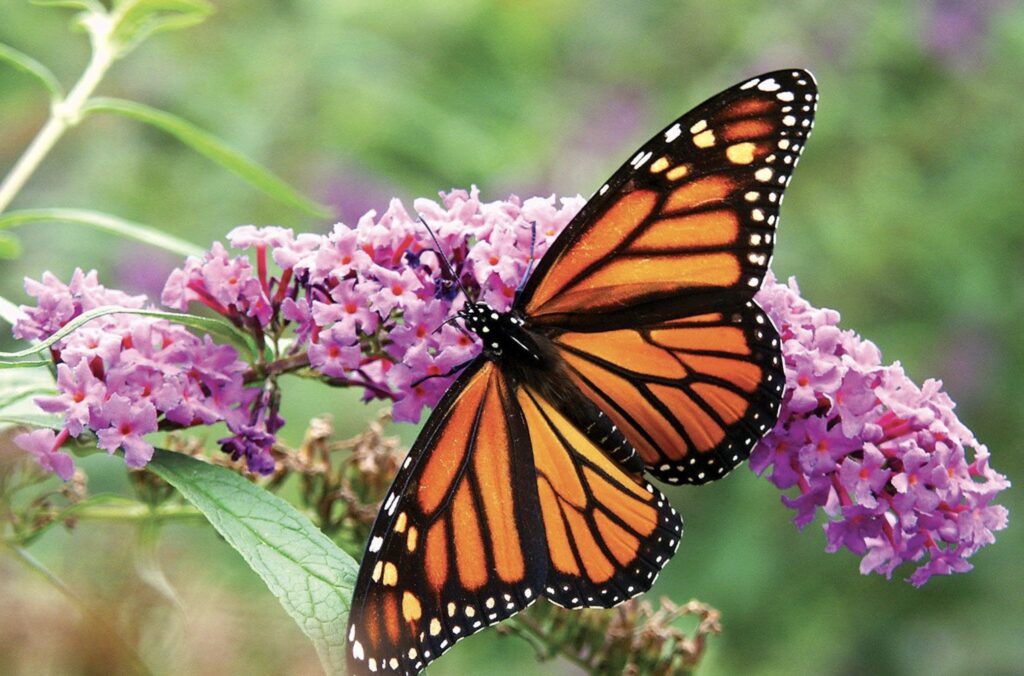
- Red Admiral (Vanessa atalanta): This species migrates between North Africa and Europe, with some individuals traveling as far north as Iceland.
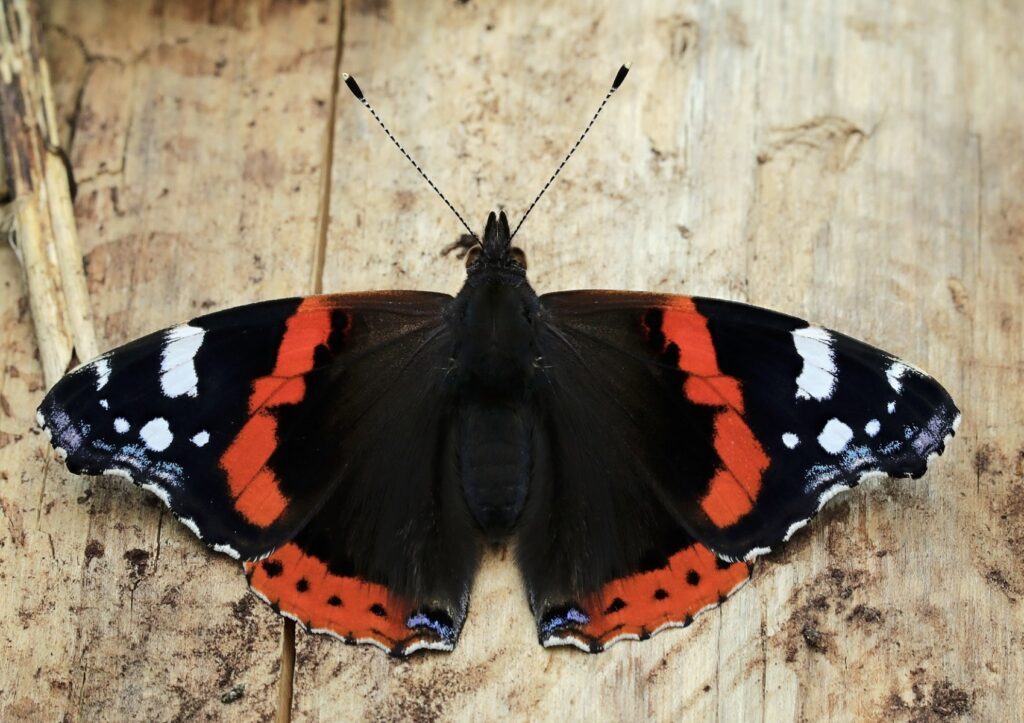
- Common Buckeye (Junonia coenia): Found in North America, these butterflies migrate to avoid cold weather, moving from the northern United States to the southern United States and Mexico.
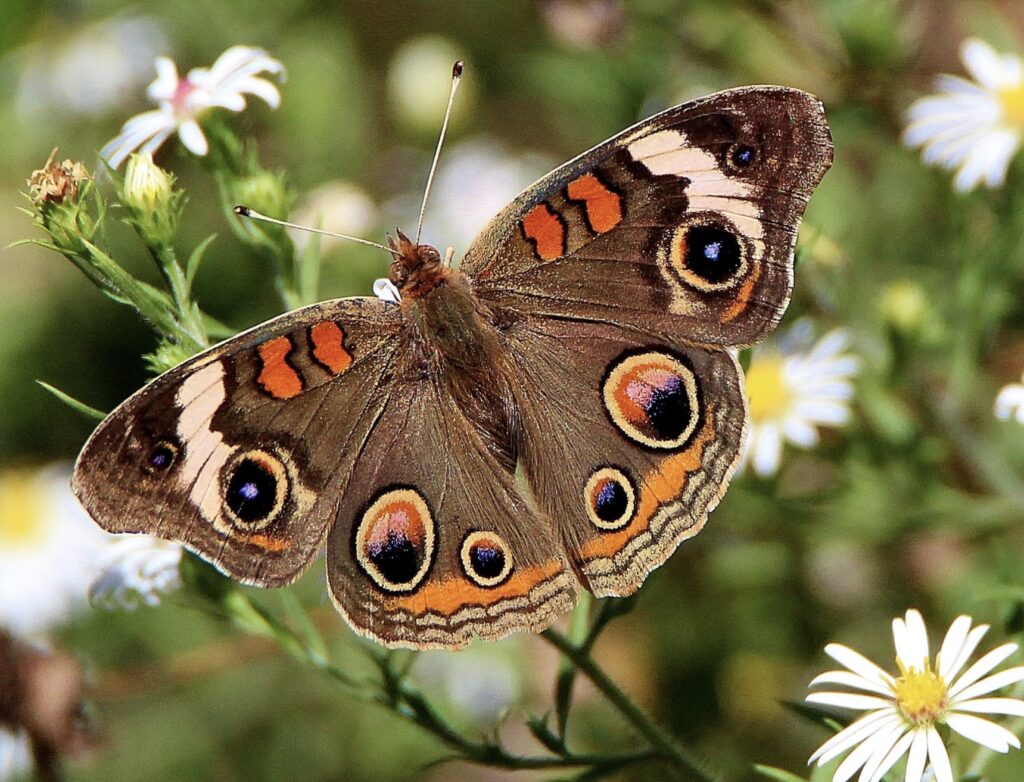
- Cloudless Sulphur (Phoebis sennae): Known for its migrations in the Americas, this species moves between the United States and Central America, following the blooming of host plants.
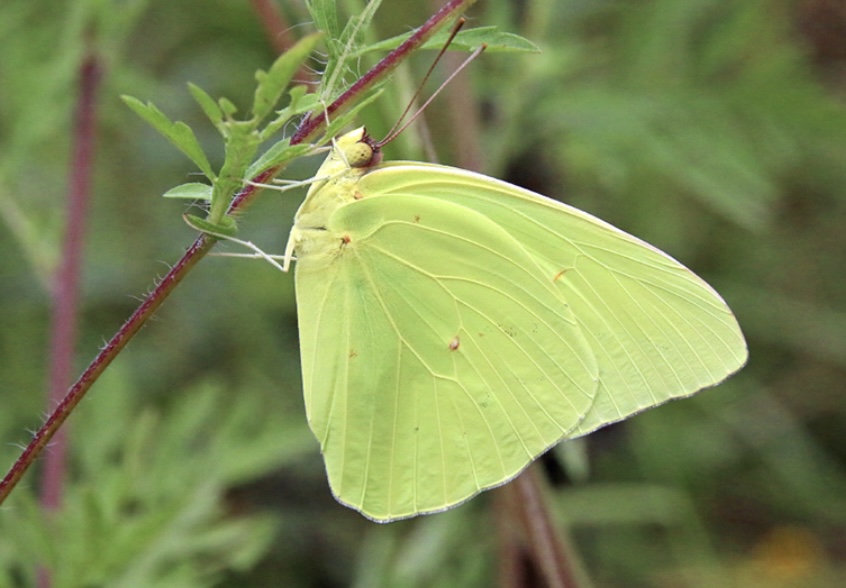
- Painted Lady (Vanessa cardui): Besides the recently discovered transatlantic journey, painted ladies are known for their migrations between Europe and Africa.
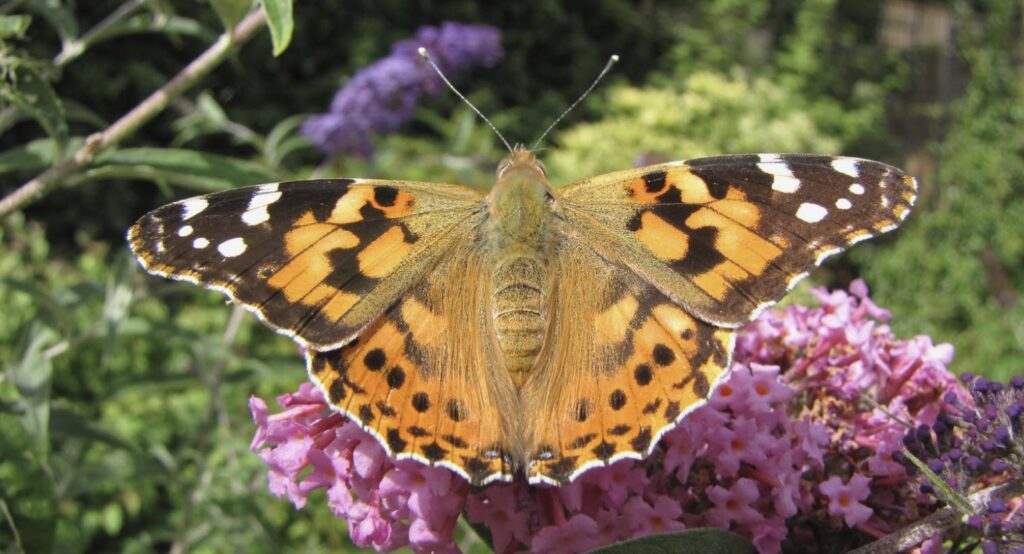
The lifespan of a butterfly can vary widely depending on the species, environmental conditions, and time of year. Generally, the lifespan of most butterflies ranges from a few weeks to several months. Here are some specifics:
- Short-lived Butterflies: Many species, like the Cabbage White (Pieris rapae), live for about 2-4 weeks in their adult form.
- Medium-lived Butterflies: Some butterflies, such as the Painted Lady (Vanessa cardui) and Red Admiral (Vanessa atalanta), can live for several weeks to a few months.
- Long-lived Butterflies: Monarch butterflies (Danaus plexippus) have one of the longest lifespans among butterflies, particularly the generation that migrates, which can live up to 8-9 months.
- Diapause: Some species, especially those in temperate regions, can enter a state called diapause during winter, effectively extending their lifespan by several months.
Overall, while many butterflies live for just a few weeks, certain migratory species and those that undergo diapause can survive for much longer.
